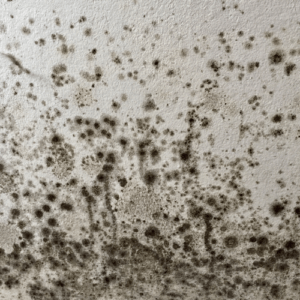Mould Removal | The Impact of Mould on Your Home’s Structural Integrity
Mould Removal | The Impact of Mould on Your Home’s Structural Integrity
Key Takeaways
- Mould can seriously compromise a home’s structural elements, including wood and metal, leading to decay and corrosion.
- Early identification and professional assessment are crucial in managing and mitigating the impact of mould.
- Effective mould remediation includes moisture control, removal and replacement of infested materials, and possibly professional mould removal services.
- Preventative measures such as proper ventilation, regular maintenance, and humidity control are essential to protect a home against future mould growth.
- Maintaining an indoor humidity level between 30-50% is recommended to prevent the conditions that promote mould development.
Summary
Mould poses a significant risk to a home’s structural integrity, leading to material decay and increased repair costs. Early detection, mould removal, and prevention are essential. Strategies include controlling moisture, repairing leaks, ensuring proper ventilation, and maintaining humidity levels between 30-50%. Regular home maintenance can mitigate mould’s damaging effects, ensuring the longevity and safety of the property.
In today’s robust real estate market, homeowners are increasingly vigilant about the condition and longevity of their properties. One critical aspect often overlooked is the insidious nature of mould growth and its potential impact on a home’s structural integrity. This article aims to provide a comprehensive understanding of how mould can affect your home and what steps can be taken to mitigate these risks.
The Stealthy Advancement of Mould in Homes
Mould is a type of fungus that thrives in moist environments and can grow on almost any substance when moisture is present. Homes can become susceptible to mould through a variety of avenues, including leaks, high humidity, or condensation, often in areas that go unnoticed such as behind walls or under flooring.
Consequences of Mould Growth on Structures
The repercussions of unchecked mould growth in a home are manifold. Not only does mould degrade the aesthetic value of your property, but it can also:
- Weaken Structural Elements: Mould can feed on the organic components of building materials like wood, leading to decay and compromising the structural integrity.
- Corrode Building Materials: Certain types of mould produce by-products that can corrode metals and other materials, which can weaken support structures and fasteners.
- Compromise Insulation: When mould takes hold in insulation materials, it can reduce their effectiveness, leading to higher energy costs and potential moisture issues.
- Undermine Foundation Integrity: If mould growth extends to the foundation, it can cause cracks and fissures, which threaten the very stability of the home.
Identification and Assessment
Early identification and assessment are vital to managing mould’s impact on a home. Homeowners should regularly inspect their homes for tell-tale signs of mould, which include a musty smell, visible growth on walls or ceilings, and excessive humidity. It’s prudent to consult with a professional to assess the extent of the mould and to test for the types of mould that may not be visible.
Effective Mould Removal Strategies
Once identified, effective mould removal is critical. This may involve:
- Moisture Control: Addressing any sources of moisture is the first step in mould remediation.
- Removal and Replacement: Infested materials must be removed and replaced to ensure the mould is eradicated.
- Professional Mould Remediation: Engaging professionals who specialize in mould removal can ensure that it is done safely and thoroughly.
Preventative Measures for Long-Term Protection
To protect your home long-term, consider the following preventative measures:
- Proper Ventilation: Ensure that areas of high moisture, such as bathrooms and kitchens, are well-ventilated.
- Regular Maintenance: Routine checks of roofing, plumbing, and HVAC systems can prevent the conditions that allow mould to flourish.
- Humidity Control: Use dehumidifiers to maintain an indoor humidity level between 30-50%.
Understanding the impact of mould on your home’s structural integrity is crucial for maintaining a safe, healthy, and robust dwelling. Through diligent inspection, prompt mould removal, and preventative strategies, homeowners can protect their investments and their well-being.
FAQs
What are the first steps I should take for mould removal in my home?
The first step in mould removal is to identify the source of moisture and address it. Then, you can clean small areas with a solution specifically designed for mould removal.
Can I perform mould removal on my own, or should I call professionals?
For minor mould removal tasks, you can use store-bought mould removal products. However, for extensive or persistent mould problems, professional mould removal services are recommended to ensure complete eradication.
After mould removal, how can I prevent mould from growing back?
Post mould removal, prevention is key. Reduce indoor humidity, ensure adequate ventilation, and use mould-resistant products in prone areas to prevent mould from returning.
Why Choose Us?
AllAces Cleaning & Restoration has over 35 years of industry experience handling extensive mould removal projects across Brisbane, Sydney, Melbourne and surrounds. Our IICRC-certified technicians utilise the latest technology and equipment to ensure the return of a safe and healthy environment.


